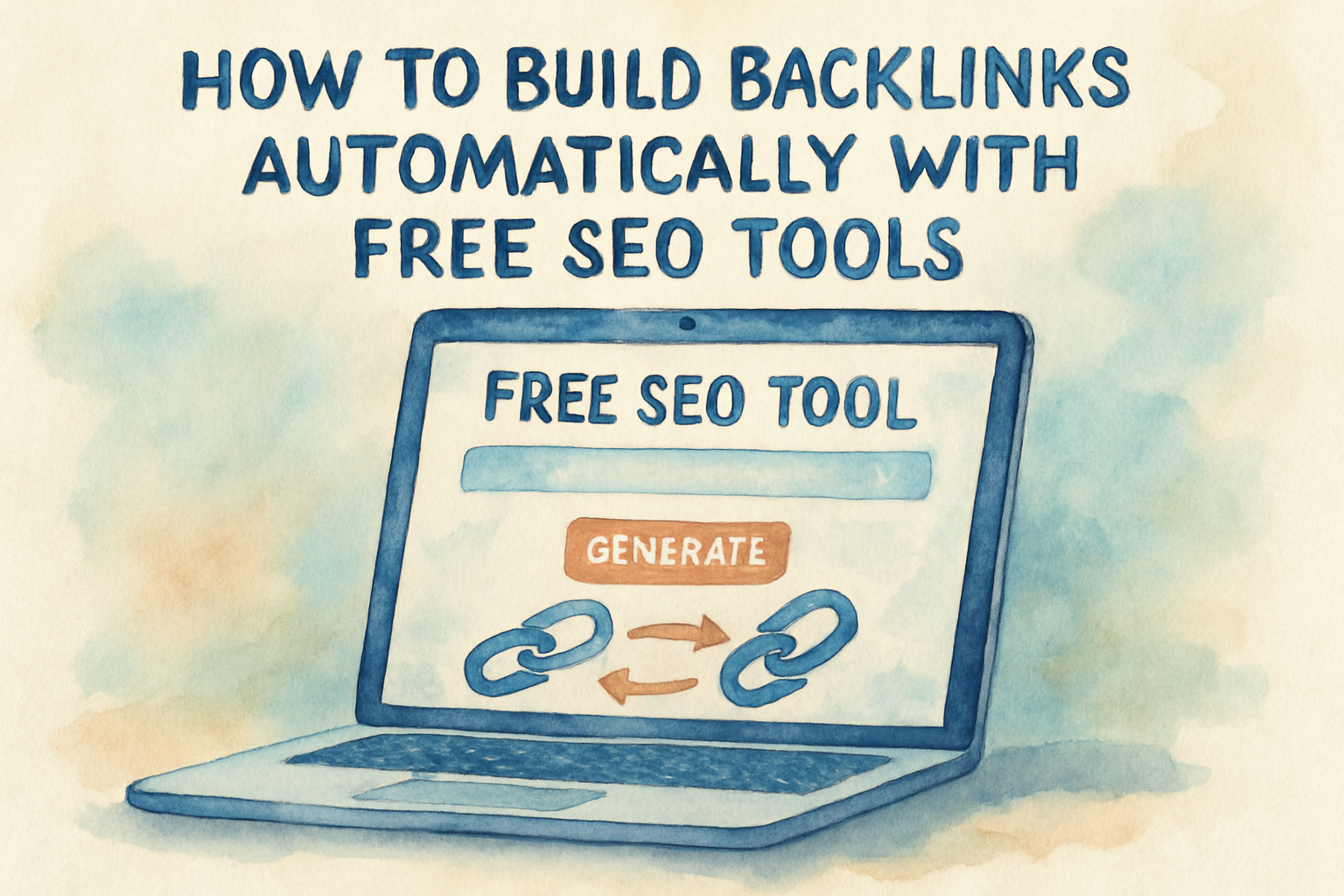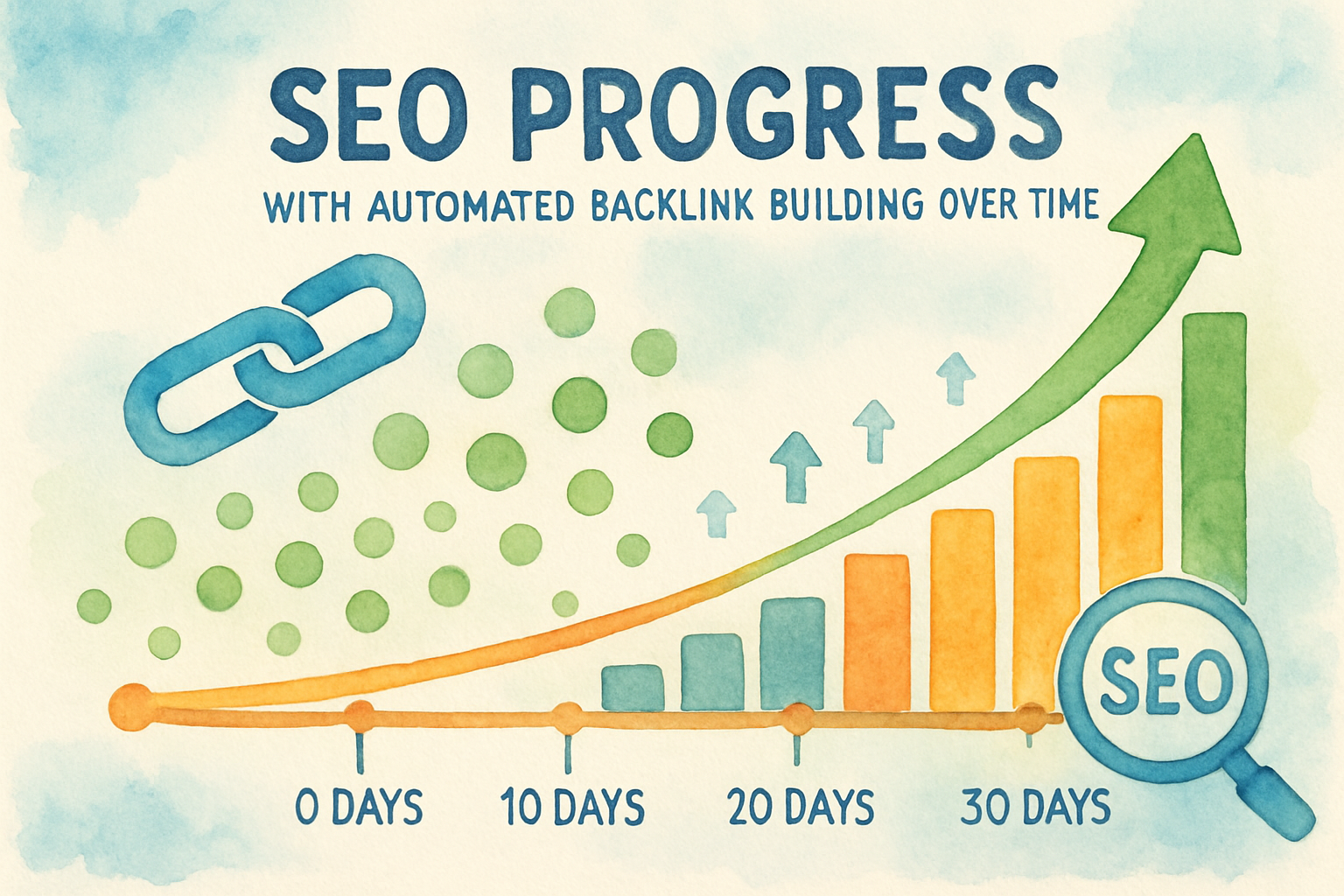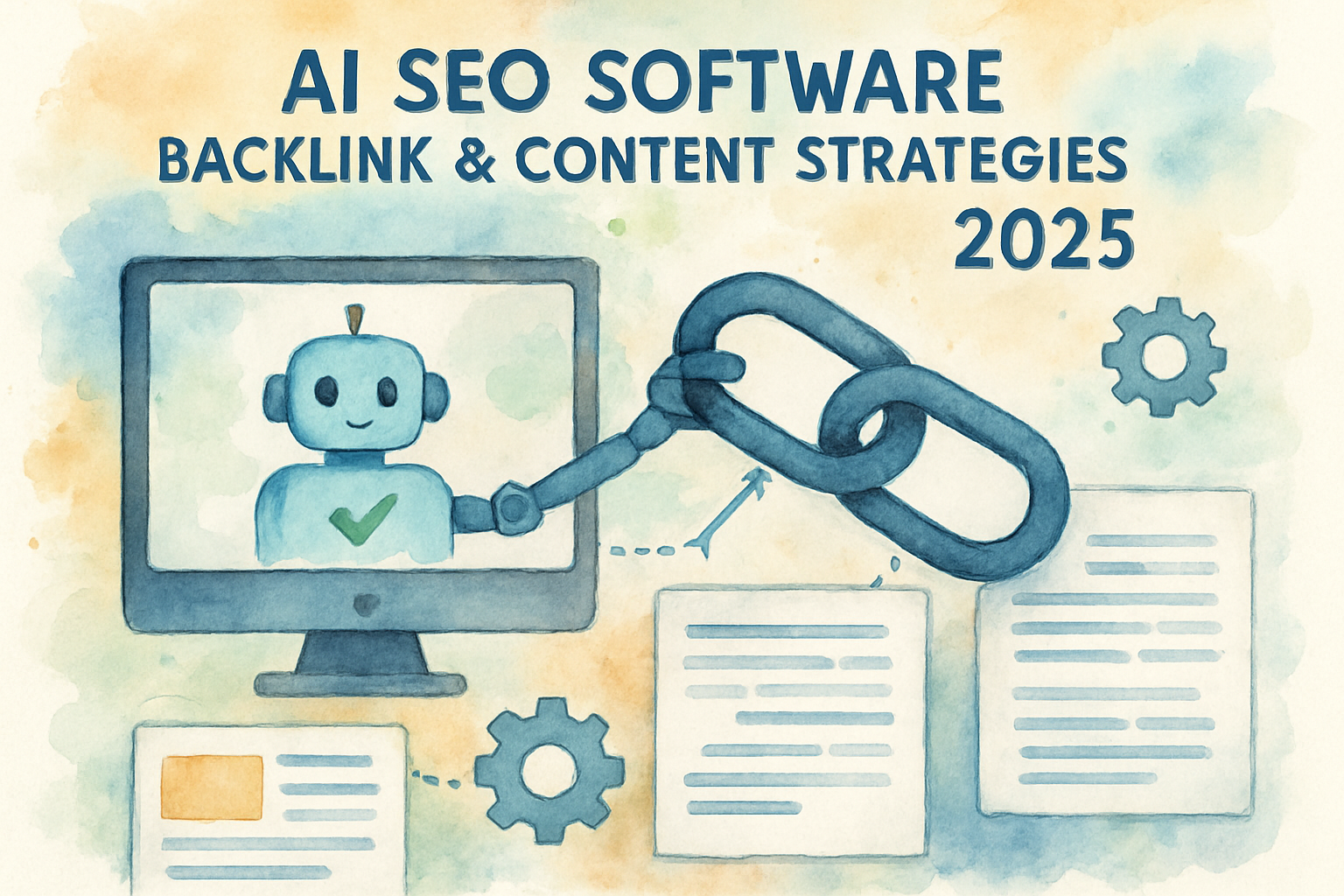Backlinks remain a cornerstone of SEO success in 2025.
But how can you build backlinks automatically without wasting time or money?
This detailed cheatsheet covers everything you need to know about automating backlinks—strategies, tools, and expert tips.
Some are automation tools that distribute your content across trusted networks.
Some are clever tactics to identify backlink opportunities with competitor analysis.
Some rely on creating free, valuable tools that naturally attract links over time.
Some use AI or software to mimic natural backlink growth without spamming.
Some approaches combine manual outreach with smart automation for maximum effect.
Let's dive right in.
What Are Automated Backlinks and Do They Really Work?
Automated backlinks are links created without manual outreach, often using software or tools that generate backlinks at scale. The idea is to gain SEO authority by building numerous links efficiently, saving you time and effort.
However, the effectiveness and safety of automated backlink building depend on the method used. Google's algorithm has evolved to detect and often ignore low-quality or spammy backlinks. In 2025, Google does not typically punish sites for backlinks, but it can ignore or discount the value of poor ones (source).
Successful automated backlink strategies focus on natural-looking, relevant, and high-quality links distributed gradually rather than spammy, rapid link dumps.
Keep in mind: Google’s core metric is popularity, not backlink quantity. So, automation has to be smart and subtle.
What Are the Best Tools to Build Backlinks Automatically?
There are several emerging tools designed to automate backlink building effectively. These include:
- Yive Ranker: This software leverages an extensive network of aged Web 2.0 properties. You provide a blog post or video URL, and it automatically creates relevant articles that embed your links across diverse, trusted sites. These links appear natural and distribute gradually over 30 days to mimic organic growth (source).
- Ubersuggest Backlink Opportunity Report: Though not fully automatic, Ubersuggest helps identify backlink prospects by showing who links to your competitors but not you. You can create better content and reach out for link swaps, democratizing link building (source).
- White-labeled SEO Tools from Marketplaces like CodeCanyon: Buying or licensing simple tools in your niche to provide free, link-worthy resources helps you accumulate backlinks passively as other sites link to your free tools rather than paid competitors (source).
These tools offer long-term, sustainable link growth rather than blackhat shortcuts that risk penalties.
How Does Yive Ranker Automate Backlink Building Effectively?
Yive Ranker is unique because it connects to a vast network of aged, authoritative Web 2.0 properties across niches and automatically posts scraped, spun, and curated articles containing your backlinks.
Here’s how it works:
- You submit a target URL (blog post, YouTube video link, or content).
- Select your keywords, category, and backlink strategy — for example, Scorpius (aggressive) or Pegasus (lighter).
- Yive Ranker slowly distributes backlinks over about 30 days, generating links that appear organic.
- These backlinks appear on relevant blogs, publishing unique articles referencing your content and embedding links to your target URL.
This makes the backlink building appear natural to search engines, reducing the risk of penalties and steadily improves your rankings and traffic (source).
The system works best when combined with manual outreach or other organic SEO tactics for a balanced, multi-channel approach.
Can You Really Create a Free Tool to Generate Backlinks Automatically?
Yes! Neil Patel’s Ubersuggest is a prime example of building backlinks automatically with a free, valuable SEO tool. Here’s why this method works:
- Ease and Cost: People love linking to free tools instead of paid ones. Free tools remove friction such as purchase, signups, or registrations.
- Trust and Value: The tool provides genuine value, so naturally attracts links from blogs, news sites, forums, and social media.
- Longevity: A free tool continuously draws new eyeballs and backlinks over months and years.
If developing a tool from scratch is too costly, marketplaces like CodeCanyon offer white-label tools starting around $10-$30. You can rebrand and provide these on your site to slowly build backlinks automatically (source).

What Are the Smartest Hybrid Approaches for Automatic Link Building?
Pure automation has limits, so many experts combine smart manual tactics with automation for the best results:
- Backlink Opportunity Report + Manual Outreach: Use tools like Ubersuggest to find pages linking to competitors. Craft better content than theirs, then email the linkers for swaps or backlinks. This saves time by focusing outreach on likely prospects.
- Automated Link Distribution + Manual Content Creation: Create quality blog posts or videos, then use automated backlinks through platforms like Yive Ranker to boost their exposure and ranking gradually.
- Automated Tool + Content Strategy: Provide a free SEO or niche-specific tool on your site that earns passive backlinks while consistently publishing useful content in your industry.
This layered approach leverages technology and human creativity, multiplying the SEO impact without spamming (source).
Quick Tip: Google's Gary Illyes confirmed that backlink penalties have decreased and Google mostly ignores bad backlinks rather than penalizing websites. Focus instead on quality and relevance rather than sheer backlink volume.
How Fast Can Automated Backlinks Improve Your Website Rankings?
Backlink building — automatic or manual — is a long-term strategy. Automated methods like Yive Ranker spread backlinks over approximately 30 days to simulate natural growth. Rapid spikes in backlinks often look spammy to search engines and could be discounted or penalized.
Expect to see rankings gradually improve over 1-3 months, depending on your niche competition and content quality. Combining link-building automation with quality content creation, site optimization, and user engagement accelerates ranking improvements.
Consistency beats shortcuts. Persistent backlinking over months compounds your SEO gains.

What Are the Common Pitfalls With Automated Backlink Building to Avoid?
Automating backlinks can be risky if mishandled. Here’s what to avoid:
- Spammy, Low-Quality Links: Tools that dump thousands of irrelevant or poor links quickly can harm or devalue your SEO.
- Lack of Relevancy: Backlinks must come from relevant, niche-related sites. Random links from unrelated niches have little value.
- Overdoing at Once: Rapid backlink spikes look unnatural. Spread links over time.
- Ignoring Content Quality: Even with backlinks, poor-quality content won’t rank well long-term.
- Buying Links Carelessly: Google warns that buying backlinks wastes money and might be ignored or cause penalties (source).
Automation must be balanced with quality and manual oversight for sustainable success.
How Can You Monitor and Manage Automatic Backlink Campaigns?
To ensure maximum value from automated backlinks, consistent monitoring is key:
- Use SEO Tools: Platforms like Ahrefs, Semrush, and Ubersuggest show which backlinks point to your site and their quality metrics.
- Track Rankings: Monitor keyword ranking improvements linked to backlink efforts.
- Disavow Bad Links: While Google largely ignores bad backlinks, if you detect spammy links from harmful sources, disavow them in Google Search Console.
- Audit Content: Regularly ensure your backlinks point to valuable pages with strong content.
- Adjust Campaigns: Use tool dashboards like Yive Ranker’s to track campaign progress and adjust strategies or credits allocated.
For deeper insights into backlink analytics and monitoring, check out this comprehensive guide to checking backlinks in Google Analytics.
What Is the Future of Automatic Backlink Building?
As AI-driven SEO tools evolve, automated backlink building will become smarter and more integrated into broader marketing systems. Expect:
- More niche-specific automation leveraging deep content analysis and semantic relevance.
- Integration with outreach and PR tools, blending manual and automated workflows.
- Greater focus on user engagement signals alongside backlinks for ranking influence.
- Improved monitoring tech providing better real-time backlink quality insights.
Automation will be one ingredient in a diverse SEO recipe emphasizing brand popularity, content excellence, and technical performance (source).

Frequently Asked Questions on Automating Backlink Building
Can I rely on automated backlinks alone?
No. Automation should complement manual SEO efforts like content marketing, outreach, and site optimization for best results.
Is buying backlinks effective in 2025?
Google warns buying backlinks is mostly a waste of money since bad backlinks are ignored or penalized. Focus on earning quality links instead.
How many backlinks should I build per month automatically?
It varies by niche and site age. A gradual 30-50 backlinks per month spread across relevant, authoritative sites is a safe starting point.
Do automated backlinks hurt my site’s ranking?
If done carelessly, yes. Spammy links can harm rankings. Use reputable tools and avoid link farms or unrelated link networks.
How can I make automated backlink outreach more effective?
Combine automation with personalized emails or outreach. Use backlink opportunity reports to focus on high-probability prospects.
What's Your Next Step?
Tell us in the comments: How will you apply this to your SEO strategy? For personalized advice, check our automation guide and reach out for expert support!
Before you go, explore our article comparing Substack vs Medium to find the best platforms for your content that can amplify backlinking benefits. And if building a website to host your tools or content, see our insights on Squarespace vs WordPress vs Wix.